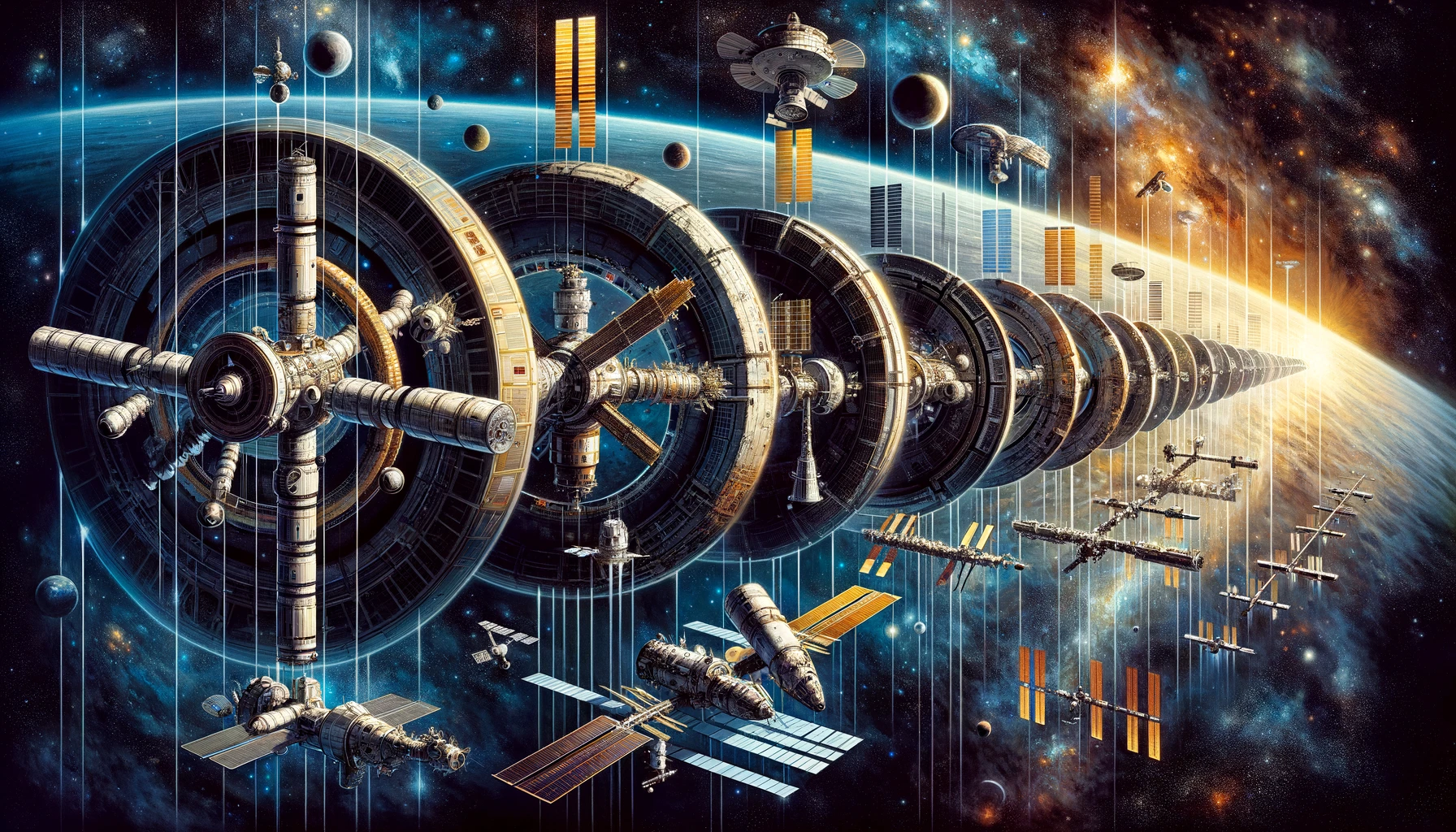Journey through the Stars: The Evolution of Space Stations

Introduction
Space stations, the marvels of human engineering orbiting Earth, serve as a testament to our quest for knowledge and exploration beyond our planet. These sophisticated structures are not just outposts in space; they are hubs of scientific research, technological advancement, and international cooperation. In this blog post, we’ll embark on a chronological journey through the history of space stations, exploring their development, capabilities, and the role they play in advancing our understanding of space.
1. Salyut 1 (Soviet Union)
The era of space stations began with the launch of the Soviet Union’s Salyut 1 on April 19, 1971. This pioneering outpost, with an internal volume of 100 cubic meters, marked humanity’s first long-duration habitation in space. Although its operational life was cut short due to a tragic accident, Salyut 1 laid the groundwork for future space stations, showcasing the potential of sustained human presence in orbit.
2. Skylab (USA)
The United States entered the space station arena with Skylab, launched on May 14, 1973. Boasting an impressive internal volume of 320 cubic meters, Skylab provided a platform for extensive scientific experiments, including studies on the effects of long-term microgravity on the human body. Despite challenges, including significant damage during launch, Skylab’s contribution to space research was monumental before its re-entry and disintegration in 1979.
3. Salyut Series (Soviet Union)
Following Salyut 1, the Soviet Union continued to develop the Salyut program from 1971 to 1986. Each station in this series had varying internal volumes and operational durations, refining the concept of space habitation. These stations played a pivotal role in advancing space medicine, astronomy, and Earth observation, setting numerous records for crew endurance and scientific output.
4. Mir (Soviet Union/Russia)
Mir, launched on February 20, 1986, became a symbol of space endurance and international collaboration. With an internal volume of 350 cubic meters, it was the first modular space station, allowing for expansion and upgrades over time. Hosting a variety of international astronauts, Mir was a global research facility until its deorbit in 2001, leaving behind a legacy of continuous human presence in space and a plethora of scientific data.
5. International Space Station (ISS) (International)
The International Space Station, a multinational collaborative project, represents the pinnacle of space station technology. Its first module was launched on November 20, 1998, and it has since grown to an internal volume of around 388 cubic meters. The ISS serves as a microgravity laboratory, technological testbed, and space environment research facility, continually inhabited since the year 2000.
6. Tiangong Space Stations (China)
China’s foray into space stations began with Tiangong-1, launched in 2011, followed by Tiangong-2, and the ongoing development of the Tiangong space station. These modules, each with specific design and research objectives, mark significant steps in China’s independent space capabilities, contributing to scientific research in space medicine, physics, and astronomy.
7. Future Projects in Space Station Development
The future of space stations is as dynamic and promising as their past. The Axiom Space Station plans to expand the ISS before forming an independent commercial space station. Russia is developing the Russian Orbital Service Station (ROSS), a proposed national space station. The Lunar Gateway, part of NASA’s Artemis program, is envisioned as a staging point for lunar and deep space missions. Additionally, commercial entities like SpaceX and Blue Origin are exploring the potential of private space stations and habitats, promising a new era of commercial and tourist activities in space.
Conclusion
The evolution of space stations reflects humanity’s enduring ambition to explore and understand space. From the humble beginnings of Salyut 1 to the International Space Station and beyond, these orbiting habitats have become symbols of our scientific and exploratory capabilities. As we look to the future, the continued development of space stations, driven by both governmental and commercial entities, holds the promise of furthering our understanding of space and opening new frontiers for humanity.